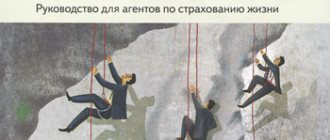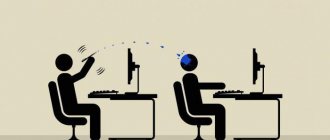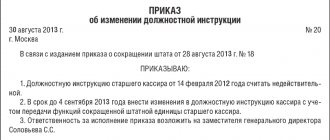Rights Designer
3.1. The designer has the right to take action to prevent and correct any violations or non-conformities. 3.2. The designer has the right to receive all social guarantees provided for by law. 3.3. The designer has the right to demand assistance in the performance of his official duties and the exercise of rights. 3.4. The designer has the right to demand the creation of organizational and technical conditions necessary for the performance of official duties and the provision of the necessary equipment and inventory. 3.5. The designer has the right to get acquainted with draft documents relating to his activities. 3.6. The designer has the right to request and receive documents, materials and information necessary to fulfill his job duties and management orders. 3.7. The designer has the right to improve his professional qualifications. 3.8. The designer has the right to report all violations and inconsistencies identified in the course of his activities and make proposals for their elimination. 3.9. The designer has the right to familiarize himself with documents defining the rights and responsibilities of the position held, and criteria for assessing the quality of performance of official duties.
Education
People don't suddenly become designers. This is a talent that needs to be developed from childhood. In adolescence, it is recommended to attend art school, then continue your studies at a college or university with a degree in design.
Higher education can be obtained at such universities as: St. Petersburg State University, St. Petersburg State Academy of Arts and Industry named after A. L. Stieglitz, St. Petersburg State Polytechnic University.
Art universities in Moscow: Moscow State University of Culture and Arts (MGUKI), Russian State University for the Humanities (RGGU), Moscow State Academic Art Institute named after V. I. Surikov (MGAHI named after V. I. Surikov), Moscow State Academy of Arts and Industry them. S. G. Stroganov (MSHPA named after S. G. Stroganov).
Stereotypes, humor
Graphic designer is one of the most popular creative professions that is approached from a practical point of view. The designer needs to complete the task in the shortest possible time, and also be able to guess the customer’s wishes. This situation contributes to the emergence of new jokes and anecdotes.
Lefty won the computer graphics competition: he fit his name, photo and web page address into one pixel.
The customer brought the file for printing. Name: Backup_of_Backup_of_Backup_of_Backup_of_Graphic1.cdr. The presence of creative torment is obvious.
General provisions
1.1. An artist-designer in printing belongs to the category of specialists.
1.2. A printing designer is appointed to a position and dismissed from it by order of [the position of the head of the publishing organization] upon the recommendation of [the head of the structural unit; other official].
1.3. A person with a higher art education and work experience in a publishing house of at least [value] years is appointed to the position of graphic designer.
1.4. The artist-designer is guided in his work by the legislation of the Russian Federation, other regulations, instructions and methodological recommendations regulating activities in the field of production of printed products.
1.5. A printing designer should know:
— regulations, methodological materials on the production of printed products and copyright protection;
— methods and means of performing artistic and design work;
— current standards and technical specifications, design methods for various printed publications (books, magazines, newspapers, booklets, posters, etc.);
— rules for layout of printed publications;
— computer programs used to create projects of printed products, including the photo processing program Adobe Photoshop; vector image (drawing) editors that are used to create computer graphics Adobe Illustrator and (or) CorelDraw; prepress programs QuarkXpress and PageMaker;
— basics of drawing and photography;
— production technology of developed printed products;
— prospects for the technical development of the publishing house and trends in improving the printed products produced;
— basics of advertising and marketing;
— fundamentals of sociology, psychology;
— requirements for the development and execution of artistic and design documentation;
— basic requirements that must be taken into account in the process of creating printed products (functional, technical and constructive, ergonomic, aesthetic, etc.);
— the procedure for conducting artistic and design examination of projects of printed products, criteria for aesthetic assessment of their quality;
— advanced domestic and foreign experience in publishing and printing activities;
— fundamentals of economics, organization of production, labor and management;
— basics of labor legislation;
— internal labor regulations;
— internal documents of the publishing organization, establishing the order of activity and structure of the publishing organization;
— rules and regulations of labor protection, safety and fire protection.
1.6. In addition to the above professional knowledge and skills, a graphic designer must be erudite, broad-minded, and have fundamental knowledge in the field of world literature and art.
1.7. The graphic designer reports directly to [the head of the structural unit, for example, the art director, or indicate some other official].
1.8. During the absence of a printing artist-designer (illness, vacation, business trip, etc.), his duties are performed by a person appointed in the prescribed manner, who bears full responsibility for their proper performance.
Pros and cons of professions
To work in this field, it is enough to have a computer with the necessary software, so a graphic designer can set up an office anywhere. This is the main positive aspect of the profession. Another advantage is the opportunity to make a good profit from your favorite business, provided you take a responsible attitude to your responsibilities. Today, many companies and people are ready to invest a lot of money in the visual support of their products or lives. And budding artists are in high demand, and experienced professionals are constantly receiving lucrative offers.
The disadvantages of the sector include a high level of competition. Employees of different companies are literally fighting each other to get profitable clients. A lag in the level of professionalism or customer dissatisfaction threatens a designer on the company’s staff with dismissal. You won’t be able to become a good artist quickly; you will have to work a lot, constantly develop, and master new directions.
The profession of a graphic designer is an option for people who are simultaneously passionate about computers and creating beautiful drawings. Today, everyone is provided with a variety of ways to gain the knowledge and skills necessary to start a career.
Soft skills of a graphic designer
The opinion is often expressed that you can understand the operating principle of 2-3 graphic editors and you can proudly call yourself a graphic designer and confidently start working.
In fact, a person must have a number of personal qualities that greatly contribute to professional development and salary growth.
- Ability to draw at the sketch level (thinking on paper helps a lot in your work).
- Sense of style, color and aesthetic taste.
- Creative thinking.
- Meticulousness and pedantry.
- Perseverance and concentration.
- The desire to constantly develop.
Basic document parameters
The job description is created in accordance with a certain structure:
- General section.
- Labor functions.
- Employee responsibility.
- His rights.
To these mandatory sections containing the main parameters of an employee’s activities, many employers also add a number of auxiliary ones:
- Working conditions.
- Job relationships.
- Criteria by which the success of an employee is assessed.
- Other aspects they want to focus on.
Including additional sections makes sense in large businesses where employers seek to document their relationships with numerous employees in different positions. This helps reduce the frequency of individual disputes and misunderstandings in work life.
General provisions
The introductory part, which describes the main parameters of work activity:
- who supervises the specialist;
- by whom he is hired and dismissed from it;
- the procedure for its temporary replacement;
- the experience and education expected of him;
- what practical skills are required by the employer;
- other possible aspects.
Qualification requirements play a major role here. They provide verification of the candidate’s readiness to solve job tasks.
Attention! The contents of the instructions must not conflict with the employment contract, which takes precedence in the event of conflicts between them.
Functions
The job responsibilities specified in this part depend on the designer's field of activity and the industry affiliation of his employer. The contents of this section can be divided into three parts:
- The main functions are the same for most designers at different enterprises.
- Secondary - may differ depending on the importance of the employee in a particular company, his qualifications and other points.
- Basic - they are required for various professions: follow safety rules, maintain order at work, etc.
Attention! Professional standard 40.059 “Industrial designer” can be used as a guideline for compiling this section. There are also 14 more professional standards suitable for designers in various fields of activity, from developing the design of vehicles to designing children's products.
Responsibility
Punishment measures for an employee, as well as cases in which he can be held accountable, are established in the articles of the relevant legislation. Therefore, the paragraphs of this section are drawn up in a simplified form: after all, the specific consequences of violations are determined only after the completion of the relevant administrative and legal procedures.
Rights
This section is devoted to listing the rights given to the employee by the employer. This list should not repeat the list of rights enshrined in Article 21 of the Labor Code. Rather, it serves as a supplement, and its scope depends on the role of the employee, the employer’s labor policy and other factors.
The profession of a designer requires a large amount of specialized knowledge and a willingness to apply it in work. An unqualified employee in this position can cause great harm to the employer by missing deadlines, undermining reputation and damaging the final product. Therefore, instructions for the designer, like other responsible positions, go through several stages of preparation:
- Writing a draft, focusing on standard images and suitable professional standards.
- Discussion with a lawyer, HR manager, future colleagues and supervisors of the employee.
- Preparing a version corrected with their help.
- Signing of the instructions by the company's managers, whose signatures are required by document flow standards.
- Signing of the document by the employee himself.
Attention! The instructions are printed on corporate letterhead, including the attributes of the official document: date of preparation, title, transcript of signatures and others.








